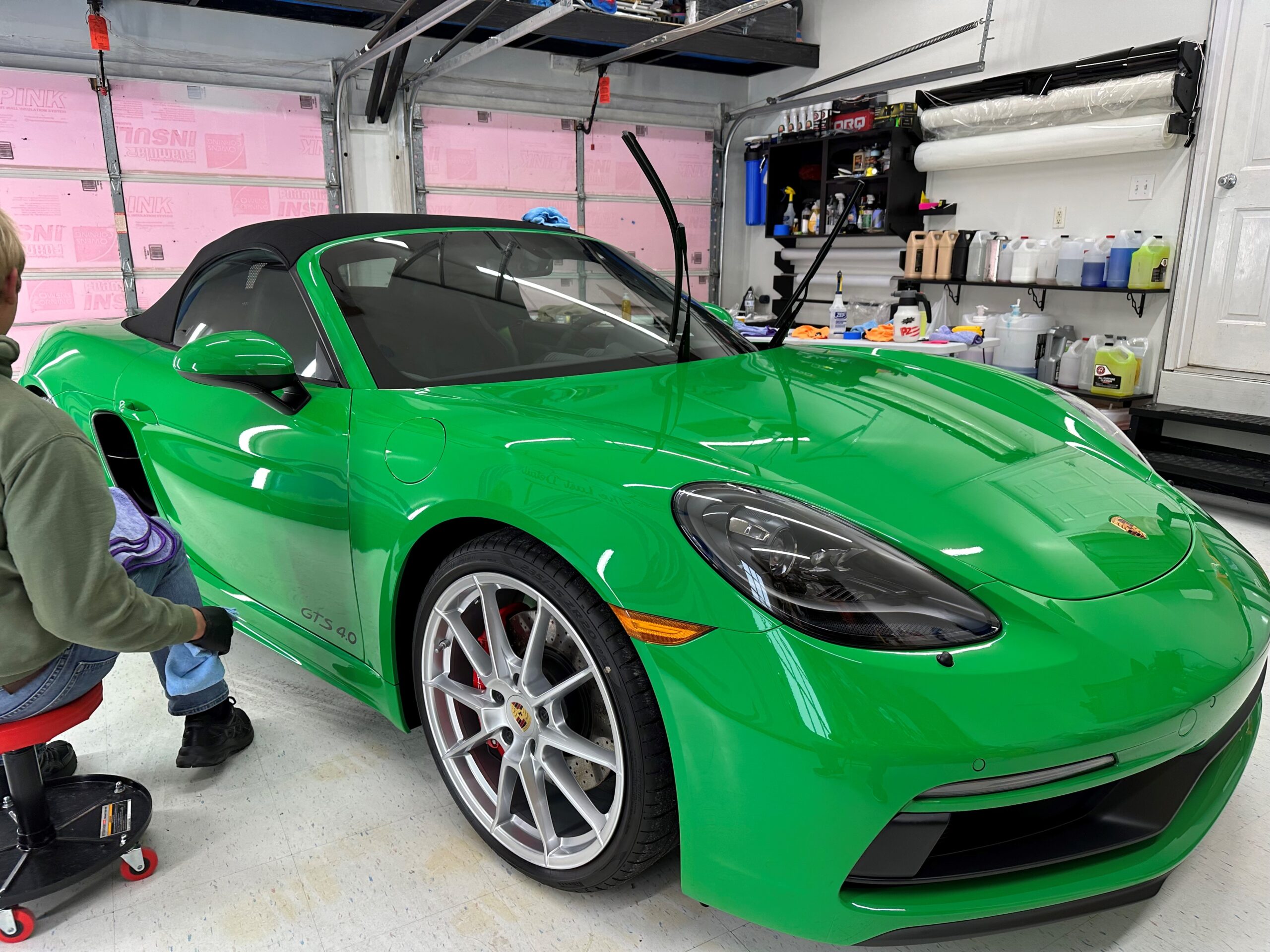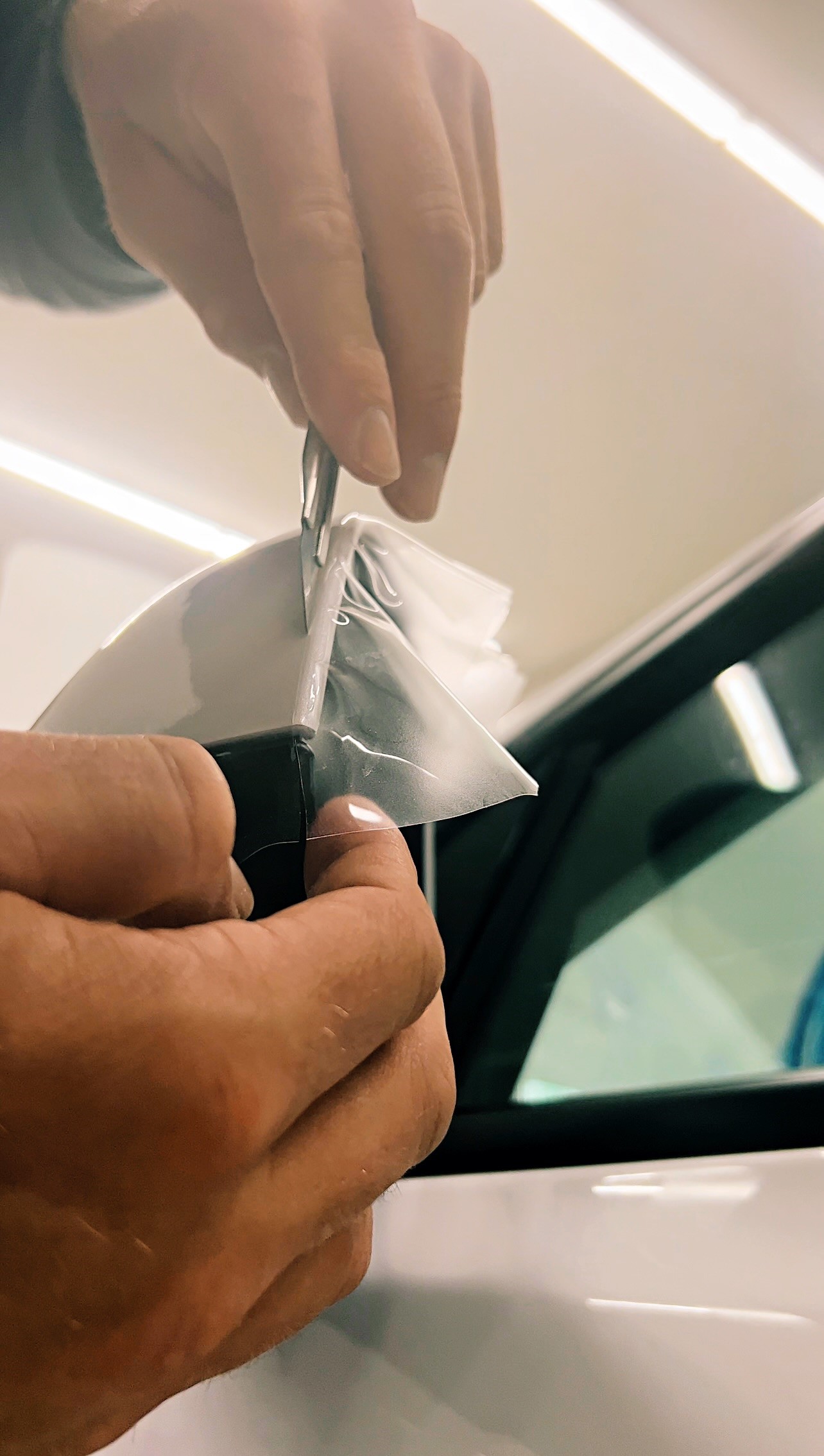The Art of Preservation: Paint Protection Film in Delaware
In the bustling and diverse automotive landscape of Delaware, where the roads weave through urban centers, suburban neighborhoods, and scenic countryside, the preservation of a vehicle’s aesthetic appeal is a pursuit that holds significant value. As the proud owner of a car, you understand the challenges posed by the diverse weather conditions, road salts, and other environmental elements unique to the Garden State. It is within this context that the concept of Paint Protection Film, often referred to as PPF, emerges as an invaluable solution to safeguard the exterior of your cherished vehicle.
Paint Protection Film DE stands as a testament to the growing awareness among car enthusiasts and owners in the state, recognizing the need for proactive measures to combat the adverse effects of wear and tear. This transparent, durable film acts as an invisible shield, providing a layer of defense against stone chips, road debris, and the harsh elements that vehicles encounter daily on Delaware roads. In this exploration of the art of preservation, we delve into the intricacies of Paint Protection Film, examining its composition, application process, and the undeniable benefits it brings to vehicle longevity and aesthetics. Join us on this journey through the protective embrace of Paint Protection Film DE, where the preservation of your vehicle’s allure becomes both an art and a necessity.

Understanding Paint Protection Film
Understanding Paint Protection Film transcends mere awareness of its existence; it involves a deeper comprehension of its composition, functionality, and the pivotal role it plays in safeguarding the exterior of your vehicle, especially in the dynamic context of Delaware diverse driving conditions. Paint Protection Film DE is not just a cosmetic accessory; it is a resilient shield designed to absorb the impact of everyday elements that can mar the pristine surface of your automobile.
Composed of clear, thermoplastic urethane, this protective film is strategically applied to vulnerable areas of your vehicle, forming an invisible barrier against stone chips, bug splatter, bird droppings, and other environmental hazards. Its molecular structure allows it to absorb and disperse impacts, preventing them from reaching the underlying paint. In the context of Delaware unpredictable weather and challenging road conditions, the application of Paint Protection Film takes on a heightened significance, serving as a proactive measure to combat the corrosive effects of road salts, UV radiation, and harsh weather.
As we delve deeper into the layers of Paint Protection Film DE, we uncover not just a defensive shield but a thoughtful investment in the preservation of your vehicle’s exterior, ensuring that it remains a gleaming testament to your commitment to both aesthetics and longevity.
The Need for Paint Protection in Delaware
The need for Paint Protection Film in Delaware is inherently woven into the fabric of the state’s distinctive driving environment, where vehicles navigate through a myriad of challenges posed by nature and infrastructure. Delaware roads bear witness to the impact of harsh weather conditions, road salts, and the persistent assault of UV radiation. These factors converge to create an environment where the wear and tear on a vehicle’s paint is accelerated, demanding a proactive approach to preservation.
Paint Protection Film DE emerges as a crucial ally in the battle against these adversities. The state’s variable climate, with its cold winters and hot summers, exposes vehicles to a range of challenges that can compromise the integrity of their exteriors. The corrosive nature of road salts, used to combat icy conditions, poses a significant threat to a car’s paintwork. In this context, Paint Protection Film serves as a resilient shield, providing a protective barrier that absorbs the impact of stones, debris, and environmental contaminants, preserving the aesthetic appeal of vehicles across Delaware diverse landscapes. As vehicle owners increasingly recognize the need for longevity and sustained beauty, Paint Protection Film DE stands as a strategic solution to combat the unique challenges posed by the Garden State’s roads.



Benefits of Paint Protection Film in Delaware
The benefits of opting for Paint Protection Film in the dynamic landscape of Delaware extend beyond mere aesthetics, revealing a comprehensive shield that ensures the longevity and resilience of your vehicle’s exterior. In a state where diverse weather conditions and road challenges are the norm, Paint Protection Film DE emerges as a strategic investment in the preservation of your automotive asset.
One of the prominent advantages lies in the enhanced protection against road debris and stone chips. Delaware roads can be unforgiving, with loose gravel and debris posing a constant threat to your vehicle’s paintwork. Paint Protection Film acts as a transparent barrier, absorbing the impact and preventing unsightly chips and scratches from marring the surface.
Furthermore, the resistance to environmental elements prevalent in Delaware sets Paint Protection Film apart as a robust solution. From the corrosive effects of road salts during winter to the damaging impact of UV radiation, this film provides a durable shield that ensures your vehicle’s paint retains its luster even in the face of challenging conditions.

Application and Installation Process
The application and installation process of Paint Protection Film in Delaware is a meticulous craft, reflecting the commitment to excellence in preserving your vehicle’s exterior. In the Garden State’s diverse driving conditions, the methodical application of Paint Protection Film DE involves skilled professionals who understand the unique challenges posed by the state’s roads and climate.
Professionals apply Paint Protection Film with precision, ensuring that vulnerable areas of your vehicle, such as the front bumper, hood, fenders, and side mirrors, are seamlessly covered. The process involves carefully measuring and cutting the film to fit each specific section, allowing for a custom-tailored fit that enhances both protection and aesthetics.
Choosing Paint Protection Film DE involves entrusting your vehicle to skilled technicians who are well-versed in the art of application. Their expertise ensures that the film adheres securely, providing a durable shield against road debris, environmental elements, and the challenges unique to driving in Delaware. In the skilled hands of professionals, the application of Paint Protection Film becomes a strategic investment in the long-term preservation of your vehicle’s exterior.
Choosing the Right Paint Protection Film in Delaware
Choosing the right Paint Protection Film in Delaware involves a thoughtful consideration of various factors, ensuring that your investment aligns with the specific needs of your vehicle and the challenges posed by the state’s diverse driving conditions. In the realm of Paint Protection Film DE, discerning vehicle owners weigh brand reputation, product variations, and thickness to make an informed decision.
Brands play a pivotal role in the selection process. Reputable manufacturers of Paint Protection Film have a track record of delivering quality products that withstand the rigors of Delaware roads and climate. Evaluating the different product variations available allows vehicle owners to choose a film that caters to their specific requirements, providing a tailored solution that aligns with the vehicle’s make and model.
Thickness is another critical consideration when choosing Paint Protection Film. While thinner films may offer some level of protection, opting for a thicker variant enhances durability and resilience, ensuring prolonged effectiveness against road debris, stone chips, and environmental contaminants.
FAQs
Yes, ceramic coating enhances the gloss and shine of the vehicle, giving it a showroom-like appearance.
Yes, ceramic coating can be removed, but the process requires abrasive techniques and should be done by professionals to avoid damaging the paint.
Yes, ceramic coating provides a protective barrier against salt, road grime, and other winter-related contaminants, helping to prevent corrosion.
While ceramic coating is durable, handwashing or touchless automatic car washes are recommended to avoid potential damage from brushes and harsh chemicals.
Yes, ceramic coating provides a hydrophobic effect, repelling water and making it easier to clean off mud and dirt from off-road adventures.
Conclusion
In conclusion, the journey through the art of preservation in Delaware unveils the indispensable role of Paint Protection Film. As vehicle owners navigate the diverse landscapes and weather conditions of the Garden State, the proactive choice of Paint Protection Film DE emerges as a strategic investment, blending the aesthetic aspirations with the practical necessity of shielding your vehicle’s exterior.
This transparent, resilient film not only safeguards against the relentless assault of road debris, stone chips, and environmental elements but also extends the lifespan of your vehicle, preserving its resale value. The unique challenges posed by Delaware roads and climate find a formidable opponent in Paint Protection Film, making it an integral part of the automotive preservation narrative in the state.
For those seeking the pinnacle of protection and craftsmanship, The Last Detail stands as the epitome of excellence in Paint Protection Film application. Trusting your vehicle to the skilled hands of professionals ensures that the art of preservation reaches its zenith, allowing your car to gracefully navigate the intricacies of Delaware diverse driving conditions while maintaining its pristine allure. Choose Paint Protection Film DE– because preserving your vehicle is not just an art; it’s a testament to your commitment to lasting elegance on the roads of the Garden State.
Leave a Reply